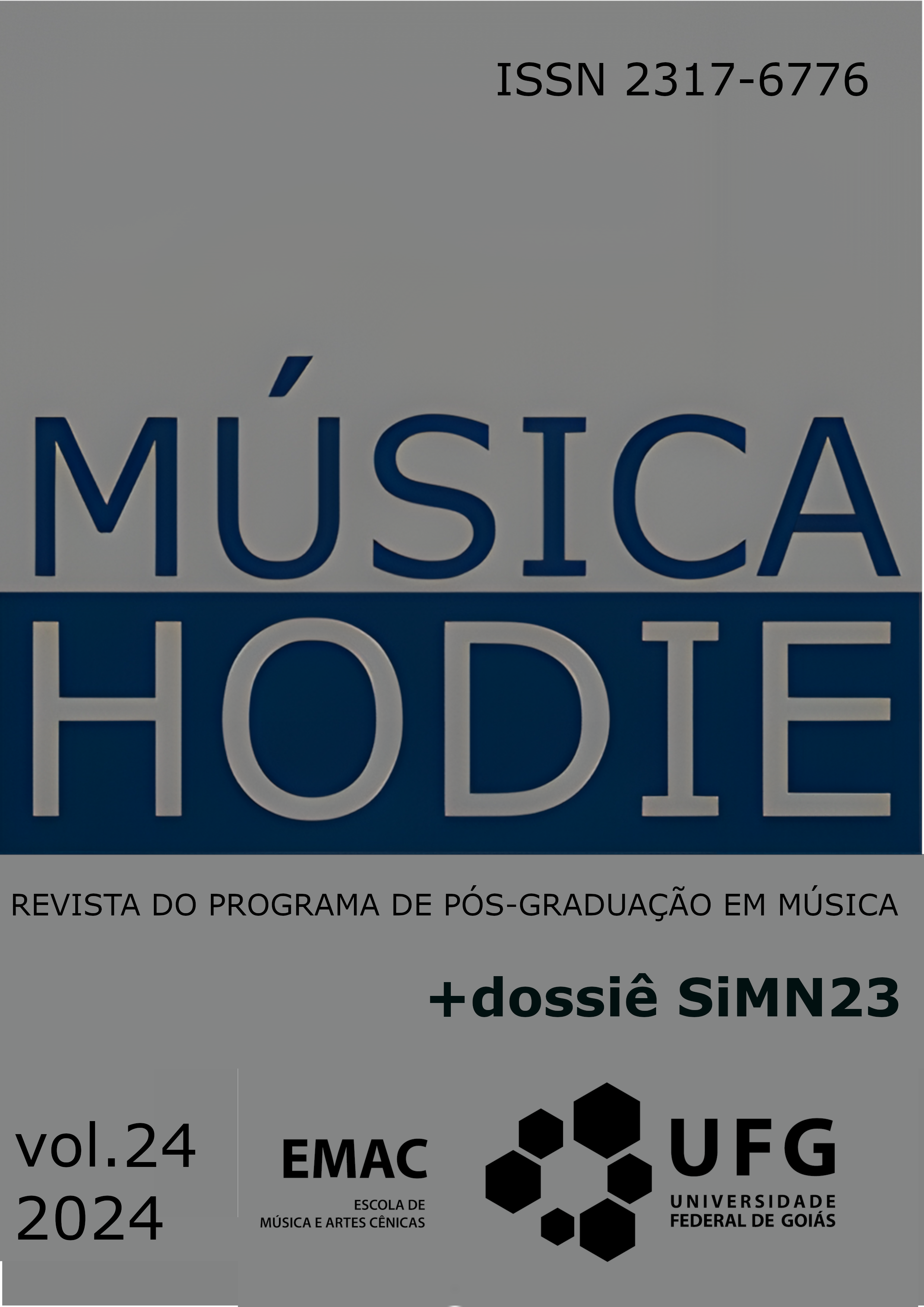Tecnomorfismo enquanto processo composicional em duas peças de Patricia Alessandrini
DOI:
https://doi.org/10.5216/mh.v24.78608Keywords:
análise musical, composição, tecnomorfismo, música acusmática, música eletroacústicaAbstract
This article aims to investigate the possible differences or similarities found in the acousmatic and instrumental creative processes based on the comparative analysis of the pieces Nani and Menus morceaux par un autre moi reunis, by composer Patricia Alessandrini. Considering the concept of technomorphism as a possible compositional model, we seek to understand the influence of technological use on composition and the particular constructions of musical discourse and its differentiations in acousmatic and instrumental contexts. The methodology adopted in this article consists of a literature review on the topic, the authors selected as theoretical references adopted include Pierre Schaeffer's theory and his type-morphology, François Delalande's cognitive musicology and his study of musical conduct, and the rhetorical canons proposed by Quintiliano so that the different phases of musical creation can be systematized based on the update of classical rhetoric applied to contemporary music made by William Teixeira. Furthermore, scores, interviews and recordings by Patricia Alessandrini are considered so that one can understand the creative processes adopted in this specific case. Finally, it is considered that studio creation procedures have become common to different creative processes and that, in the case of Alessandrini, they demonstrate an intimate relationship between acousmatic and instrumental writing, in which the two languages influence each other.















